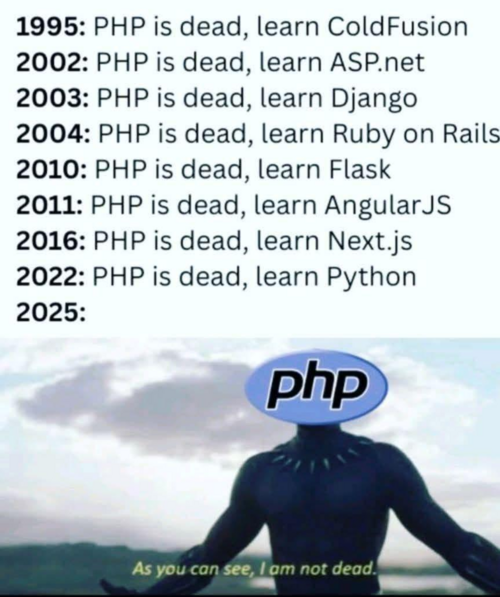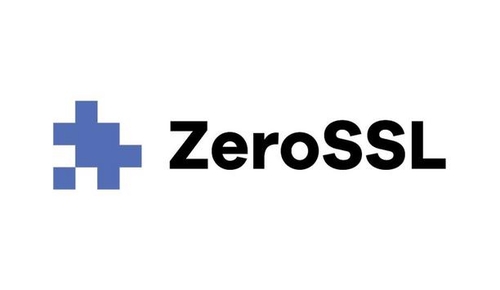🔗 View in your browser. | ✍️ Publish on FAUN.dev | 🦄 Become a sponsor
DevOpsLinks
#DevOps #SRE #PlatformEngineering
🔍 Inside this Issue
Kubernetes heroics are out; pragmatic platforms, tighter API security, and boring-fast infra are in, while the edges get delightfully nerdy with ZFS-tuned VMs, bidirectional GitHub sync, and URLs as state. From CNCF’s AI-on-Kubernetes reality check to Helix vs Vim and Terraform vs Pulumi vs Crossplane, this batch trims the fluff, details inside.
📊 2025's Cloud Native Reality Check: Who's In, Who's Lagging
🤖 CNCF Launches Certified Kubernetes AI Conformance Program at KubeCon
💾 Creating VMs in separate ZFS filesystems
🐧 Debian 13.2 Is Out: New Updates, Strong Security, and Years of Support Ahead
🔁 How to make a bidirectional GitHub Repository Sync
⌨️ Notes on switching to Helix from vim
🛡️ OWASP Top 10 for Application Programming Interfaces
⚖️ Terraform vs. Pulumi vs. Crossplane: Choosing the right IaC Tool for your platform
🔎 Visibility at Scale: How Detects Sensitive Data Exposure
🔗 Your URL Is Your State
Smarter trade-offs, fewer surprise - go build.
Have a great week!
FAUN.dev() Team
📊 2025's Cloud Native Reality Check: Who's In, Who's Lagging
🤖 CNCF Launches Certified Kubernetes AI Conformance Program at KubeCon
💾 Creating VMs in separate ZFS filesystems
🐧 Debian 13.2 Is Out: New Updates, Strong Security, and Years of Support Ahead
🔁 How to make a bidirectional GitHub Repository Sync
⌨️ Notes on switching to Helix from vim
🛡️ OWASP Top 10 for Application Programming Interfaces
⚖️ Terraform vs. Pulumi vs. Crossplane: Choosing the right IaC Tool for your platform
🔎 Visibility at Scale: How Detects Sensitive Data Exposure
🔗 Your URL Is Your State
Smarter trade-offs, fewer surprise - go build.
Have a great week!
FAUN.dev() Team
⭐ Patrons
zerossl.com
Easily secure any site by putting SSL management on autopilot, supporting one-step validation and renewal via REST API.
ℹ️ News, Updates & Announcements
faun.dev
Debian 13.2 (Trixie) dropped on November 25, 2025. Fresh packages. Tighter security. Still steady as ever.
Support runs through August 2028, then moves into LTS mode till mid-2030.
Support runs through August 2028, then moves into LTS mode till mid-2030.
faun.dev
56% of backend devs now count as cloud native. That rise tracks with heavy use of API gateways (50%) and microservices (46%). Only 30% touch Kubernetes directly, but hybrid (30%) and multi-cloud (23%) setups are gaining ground. The shift? Tighter security and chunkier, modular infra.
System shift: Cloud native isn’t all about Kubernetes anymore. It's leaning into internal platforms and MLaaS layers that spare developers from wrestling with bare-metal config.
System shift: Cloud native isn’t all about Kubernetes anymore. It's leaning into internal platforms and MLaaS layers that spare developers from wrestling with bare-metal config.
faun.dev
CNCF just kicked off the Certified Kubernetes AI Conformance Program (beta). Think of it as a litmus test for running AI workloads on Kubernetes without duct tape and hope.
The spec lays down a reference architecture, GPU and networking test criteria, and an annual renewal loop. Full automation is on deck by v2.0 in 2026.
Big picture: Kubernetes is evolving from "it runs AI if you squint hard enough" to a legit standard for portable, production-grade AI/ML workloads.
The spec lays down a reference architecture, GPU and networking test criteria, and an annual renewal loop. Full automation is on deck by v2.0 in 2026.
Big picture: Kubernetes is evolving from "it runs AI if you squint hard enough" to a legit standard for portable, production-grade AI/ML workloads.
🐾 From FAUNers
faun.pub
A developer pulled off bidirectional repo mirroring using custom GitHub Actions, SSH deploy keys, and some sneaky SSH config aliases. No forks. No PATs. No manual syncing nonsense. Just smooth, automated CI/CD across repos.
It also plays nice with isolated pipelines - ideal for white-label builds - and still pushes status checks upstream like nothing’s changed.
It also plays nice with isolated pipelines - ideal for white-label builds - and still pushes status checks upstream like nothing’s changed.
faun.pub
OWASP's API Security Top 10 is less a list, more a wake-up call. Think broken object-level auth, unchecked defaults, and routes that hand out too much power with too little oversight. APIs are exposing sensitive ops left and right - without basic ownership checks, rate limits, or input validation.
The fix? OWASP doesn’t just wave red flags; it points to solid defenses: allowlists, RBAC with teeth, and sandboxed third-party access.
The fix? OWASP doesn’t just wave red flags; it points to solid defenses: allowlists, RBAC with teeth, and sandboxed third-party access.
⭐ Sponsors
cloudns.net
Cloud DNS is the most cost-effective way to manage your domain names. You can use it with Free DNS or Premium DNS, depending on your needs. Our Cloud DNS service provides up to 10,000% uptime Service Level Agreement (SLA).
ClouDNS offers Free DNS zone migration for all new customers!
ClouDNS offers Free DNS zone migration for all new customers!
🔗 Stories, Tutorials & Articles
techworld-with-milan.com
Did you know that what were once called "scaling laws" for AI - the idea that bigger models + more data automatically mean better performance - are faltering in practice? Recent research shows larger language models now give smaller gains on real-world tasks, even though the beam size of training compute keeps climbing.
alfy.blog
Modern frontend apps love to complicate state. But they keep forgetting the URL - shareable, dependency-free, and built for the job.
This piece breaks down how a well-structured URL can capture UI state, track history, and make bookmarking effortless. No localStorage. No cookies. No bloated global store.
This piece breaks down how a well-structured URL can capture UI state, track history, and make bookmarking effortless. No localStorage. No cookies. No bloated global store.
oxcrag.net
A dev split KVM/QEMU VMs out of a shared ZFS directory and into their own ZFS filesystems. Why? Snapshot rollbacks. Finer-grained storage control. Clean.
The new setup rides a fresh ZFS pool tuned with a 64KB recordsize for QCOW2 images. That lines up virtual disk performance with the real IO under the hood - no more mismatch bottlenecks.
The new setup rides a fresh ZFS pool tuned with a 64KB recordsize for QCOW2 images. That lines up virtual disk performance with the real IO under the hood - no more mismatch bottlenecks.
jvns.ca
Helix keeps things lean - and that's the point. It ships with LSP support, multi-cursor editing, and smart search baked in. No dotfile gymnastics required. That alone has peeled some loyalists off Vim and Neovim.
Still rough around the edges. No persistent undo. No auto-reload. Markdown support's a bit thin. And yeah, occasional crash landings. But for devs burned out on maintaining three dozen plugins just to write code? Helix feels like a deep exhale.
Still rough around the edges. No persistent undo. No auto-reload. Markdown support's a bit thin. And yeah, occasional crash landings. But for devs burned out on maintaining three dozen plugins just to write code? Helix feels like a deep exhale.
platformengineering.org
Terraform, Pulumi, and Crossplane take very different routes to Infrastructure as Code. Terraform sticks to a declarative HCL model with a massive provider ecosystem. Pulumi flips the script—developers write infrastructure in real languages, so logic is testable and dynamic. Crossplane? It runs inside Kubernetes as a control plane, handling continuous reconciliation with RBAC-wrapped abstractions.
figma.com
Segment gutted its old permissions table—bloated, slow, tangled in logic - and replaced it with a lean, service-based setup. The new stack runs on Postgres, Redis, and a sharply tuned Go API, cutting query times from 1400ms to under 100ms. Clean, fast, and centralized.
⭐ Supporters
bytevibe.co
Show your Kubernetes pride with the Kubectl Heavy Blend™ Hoodie — soft, durable, and built for long dev sessions or quick rollouts. This hoodie keeps you warm and ready to ship, whether you’re scaling clusters, sipping coffee or debugging last week incident :)
⚙️ Tools, Apps & Software
github.com
2.3x Faster than MinIO for 4K Small Files. RustFS is an open-source, S3-compatible high-performance object storage system supporting migration and coexistence with other S3-compatible platforms such as MinIO and Ceph.
🤔 Did you know?
Did you know each IPv4 address on an AWS NAT Gateway supports only up to 55,000 simultaneous outbound connections to the same destination IP/port/protocol? Hitting that cap can cause timeouts even if bandwidth is available. The usual fix isn’t more bandwidth, it’s reducing connection concurrency or assigning extra IPs/NAT gateways to spread the load.
😂 Meme of the week

🤖 Once, SenseiOne Said
"In the cloud you can outsource infrastructure, not accountability; a managed database won't carry your pager when your query pattern collapses its throughput. Error budgets buy change rate, not absolution."
— SenseiOne
— SenseiOne
👤 This Week's Human
This week, we’re highlighting Corina Taban, a Founder of 934 Leadership Advisors and Researcher & Doctoral Candidate at Grenoble Ecole de Management. A former Microsoft and Meta negotiator, she led multi‑million‑dollar partnerships with C‑level teams and now builds research‑backed leadership programs for tech companies grounded in organizational behavior and psychology. Her doctoral work on the psychological contract was recognized at the 2025 Academy of Management Global Conference, and she was named among the McKinsey Next Generation Women Leaders, having lived in five countries.



